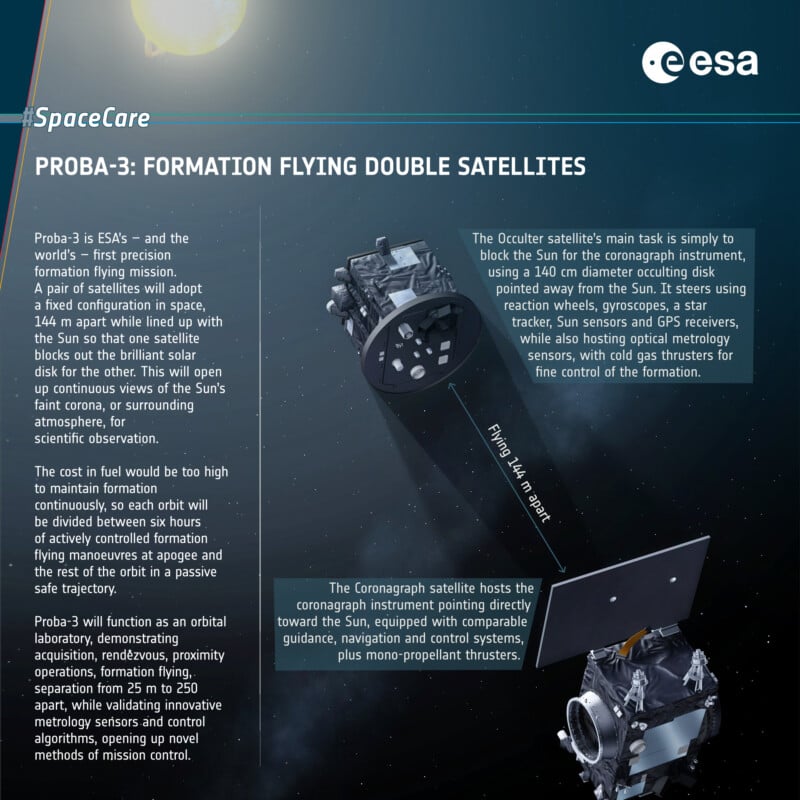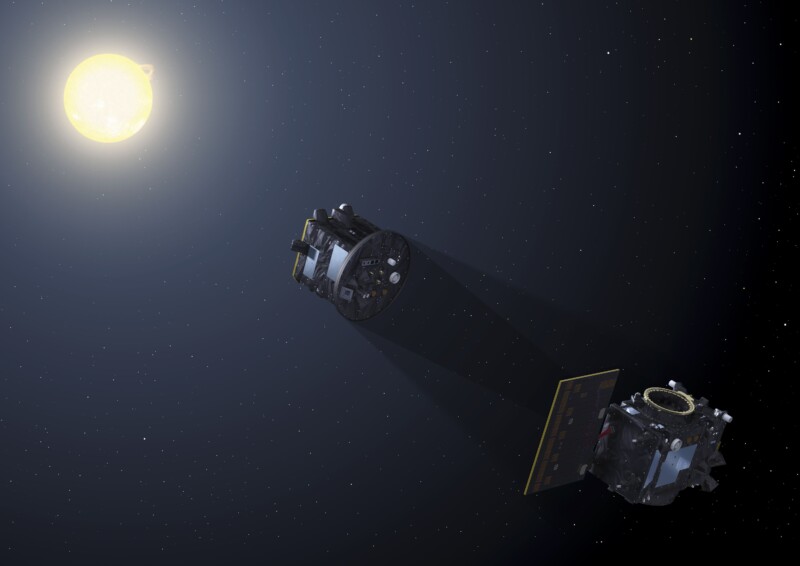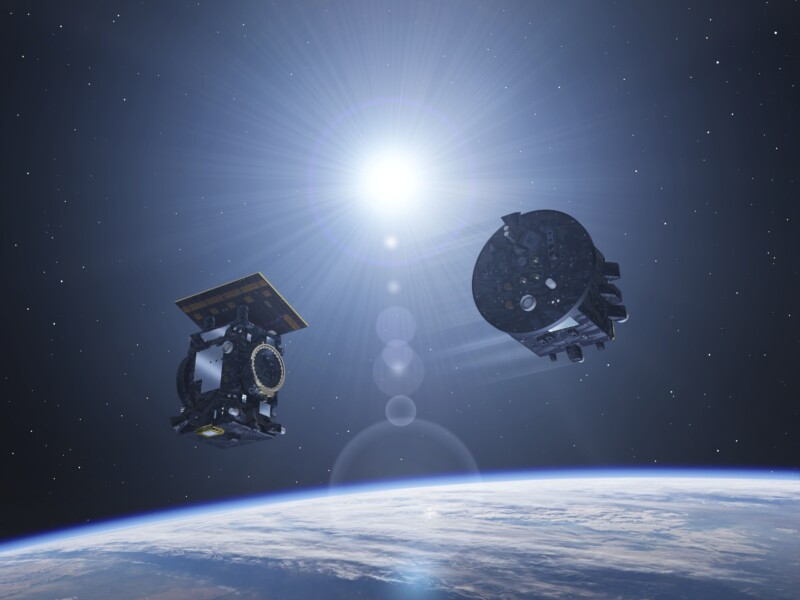
The European Space Agency (ESA) is preparing to launch a pair of satellites called the Proba-3 which will do what was previously thought impossible: block out the Sun in order to observe its corona for an extended period of time.
Proba-3, which is short for Project for On-Board Autonomy-3, is made up of two units. One is called the Coronagraph while the other is the Occulter. The two satellites are currently undergoing the final stages of their development in preparation for their launch but astronomers are already excited for what they might be able to observe. It’s been a long time coming, as the Proba-3 has been in development since 2006.
To date, the Sun’s ghostly corona has only been visible separately during total eclipses from Earth since it is otherwise significantly overwhelmed by the Sun’s brightness. But by pairing two satellites together, which are capable of holding their position to each other precisely, that effect can be replicated: one can block out the Sun while the other can then observe the corona.
“Proba-3 is ESA’s — and the world’s — first precision formation flying mission. A pair of satellites will fly together maintaining a fixed configuration as a ‘large rigid structure’ in space to prove formation flying technologies and rendezvous experiments,” the ESA explains.

The two satellites will operate close together at just 144 meters apart (but will get as close as 25 meters and as far away as 250 meters) and the system in place to assure they stay precisely in position requires GPS and an array of cameras.
“A set of cameras on the Occulter Spacecraft will image and detect LEDs mounted on the Coronagraph Spacecraft. By processing the centroid of the images, it will return the relative pose-position solution to the on-board navigation. This system has been designed to be robust to straylight such as the reflection of the Sun on the large solar array or on the Earth,” the ESA says.
“The satellite hardware was quite something in close up,” explains Joe Zender, ESA’s Proba-3 project scientist.
“I was particularly struck by how close the camera head on the Coronagraph spacecraft is to the solar array, less than a meter away. While the array relies on high solar illumination, the camera has to remain in complete darkness, with no stray light whatsoever. It really brings it home how precisely that small shadow cast by the Occulter will need to be maintained in place. We also got a peek at the carefully-machined edge of the Occulter spacecraft’s disc — normally kept under protective cover before launch. The curve of this edge has been specially designed to minimize any spillover of diffracted sunlight that would otherwise impact imaging performance.”

The ESA explains that the concept of the Proba-3 is not only unique, but also challenging.
“Placing an occulter 150 meters from the telescope to allow imaging extremely close to the limb of the Sun has never been done before, as though the Occulter spacecraft is a mini-Moon. We won’t see quite as close to the solar limb as during a terrestrial eclipse, but having such images for hours on end compared to the five to 10 minutes duration of an eclipse event will be spectacular.”

It is not possible to test the Proba-3 on Earth, but the scientists will be seeing how its filters wheels and parallel liquid crystal imaging technology, designed specifically for the project, will interact with a real eclipse when one passes over North America on in April.
“The filter wheels allow observation of the corona in different polarization angles, like switching between different polarized sunglasses,” Zender says.
“The nice about observing during an actual eclipse is we won’t need any occulter, to gain insight of exactly the kind of results we are going to get back from Proba-3.”
The Proba-3 is scheduled to launch in September and will remain in operation through 2026.
